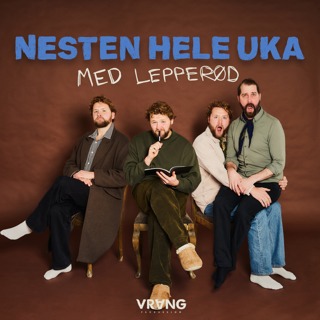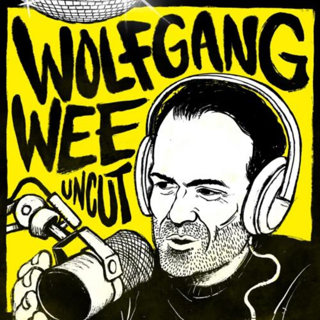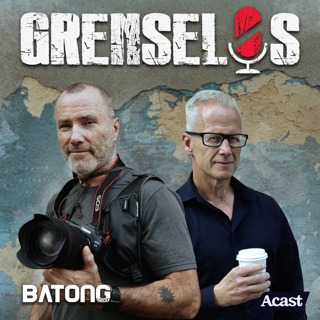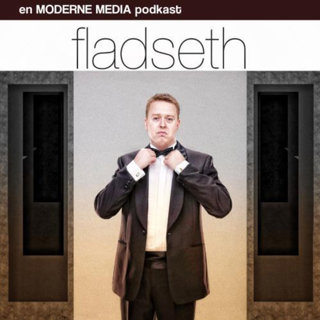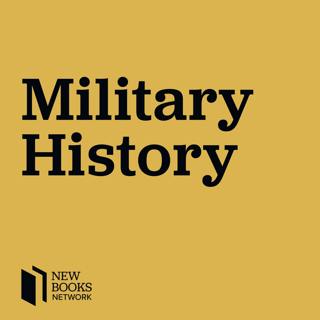
Nathaniel Philbrick, “In the Hurricane’s Eye: The Genius of George Washington and the Victory at Yorktown” (Viking, 2018)
Most Americans do not appreciate the extent to which victory in the American Revolution was due to the leadership of a French aristocrat. As Nathaniel Philbrick demonstrates in his new book In the Hurricane’s Eye: The Genius of George Washington and the Victory at Yorktown (Viking, 2018), it was Admiral Comte de Grasse’s naval victories which made possible George Washington’s decisive victory at the battle of Yorktown. Such a victory did not seem possible at the start of 1781, as the British imperial forces seemed locked in an intractable stalemate with the rebelling colonists. In that year, however, the assistance of the French helped to tip the balance, not just on sea but in the land war as well. Once Admiral de Grasse’s ships drove off the British fleet in the battle of the Chesapeake, Washington was able to lay siege to General Charles Cornwallis’s forces at Yorktown with a combined Franco-American army, defeating the main British force in the Southern states and realizing America’s independence. Learn more about your ad choices. Visit megaphone.fm/adchoices Support our show by becoming a premium member! https://newbooksnetwork.supportingcast.fm/military-history
16 Okt 201847min

Susan Carruthers, “The Good Occupation: American Soldiers and the Hazards of Peace” (Harvard UP, 2016)
In her new book, The Good Occupation: American Soldiers and the Hazards of Peace (Harvard University Press, 2016), Dr. Susan Carruthers, professor of American Studies at the University of Warwick, chronicles America’s transition from wartime combatant to post-war occupier in both Germany and Japan. This excellent book examines occupation by exploring the thoughts and feelings of ordinary servicemen and women who participated in the difficult task of rebuilding defeated nations. By examining occupation from the ground up, this book effectively tackles the mythology surrounding America’s occupation and demonstrates that the rebuilding of post-war Europe and Japan was a difficult and by no means straightforward. Learn more about your ad choices. Visit megaphone.fm/adchoices Support our show by becoming a premium member! https://newbooksnetwork.supportingcast.fm/military-history
15 Okt 20181h

Brian VanDeMark, “The Road to Disaster: A New History of America’s Descent Into Vietnam” (Harper Collins, 2018)
Many books have been written on the tragic decisions regarding Vietnam made by the young stars of the Kennedy and Johnson administrations. Yet despite millions of words of analysis and reflection, no historian has been able to explain why such decent, brilliant, and previously successful men stumbled so badly. That changes with The Road to Disaster: A New History of America’s Descent Into Vietnam (Harper Collins, 2018). Historian Brian VanDeMark, a professor of history at the United States Naval Academy, draws upon decades of archival research, his own interviews with many of those involved, and a wealth of previously unheard recordings by Robert McNamara and Clark Clifford, who served as Defense Secretaries for Kennedy and Johnson. Yet beyond that, Road to Disaster is also the first history of the war to look at the cataclysmic decisions of those in the Kennedy and Johnson administrations through the prism of recent research in cognitive science, psychology, and organizational theory to explain why the “Best and the Brightest” became trapped in situations that suffocated creative thinking and willingness to dissent, why they found change so hard, and why they were so blind to their own errors. An epic history of America’s march to quagmire, Road to Disaster is a landmark in scholarship and a book of immense importance. Learn more about your ad choices. Visit megaphone.fm/adchoices Support our show by becoming a premium member! https://newbooksnetwork.supportingcast.fm/military-history
9 Okt 201827min

Joan E. Cashin, “War Stuff: The Struggle for Human and Environmental Resources in the American Civil War” (Cambridge UP, 2018)
The Civil War was even more disastrous than we thought. Joan Cashin, already a distinguished scholar of the period, looks afresh at the war through the lens of environmental history and material culture and finds only more terrors and even greater suffering. War Stuff: The Struggle for Human and Environmental Resources in the American Civil War (Cambridge University Press, 2018) draws from a dizzying cache of research from nearly four dozen archives to capture the brutality and desperation of the wars that raged beyond the battlefield—over food, timber, shelter, and the control of people themselves. Most of these struggles were not between the armies, but between soldiers and civilians. Despite Lost Cause slurs against Sherman and his ilk, Cashin finds both armies fully capable of emptying the stores, robbing the woodlots, and torching the homes of white noncombatants. To have two massive armies with nearly inexhaustible appetites for resources crisscrossing the South ensured widespread devastation. But the destruction was all the greater because soldiers on both sides paid little attention to military codes regulating pillage and plunder, and their commanders were usually unwilling or unable to reign them in. So, Cashin argues, the war caused starvation, deforestation, the razing of villages, and an underappreciated amount of hostage-taking and abuse of civilians. After the war, there was no reckoning, no recompense for the toll both armies took on white southerners, and the scars were bandaged with myths that deceive us still. Brian Hamilton is a Ph.D. candidate at the University of Wisconsin–Madison where he is researching African American environmental history in the nineteenth-century Cotton South. He is also an editor of the digital environmental magazine and podcast Edge Effects. Learn more about your ad choices. Visit megaphone.fm/adchoices Support our show by becoming a premium member! https://newbooksnetwork.supportingcast.fm/military-history
28 Sep 201857min

Giulio Ongaro, “Peasants and Soldiers: The Management of the Venetian Military Structure in the Mainland Dominion between the 16th and 17th Centuries” (Routledge, 2017)
Dr. Giulio Ongaro, currently a postdoctoral fellow in the Economics Department at the University of Milan-Bicocca has just published Peasants and Soldiers: The Management of the Venetian Military Structure in the Mainland Dominion between the 16th and 17th Centuries (Routledge, 2017), a fascinating study of the early modern Venetian military. Rather than focus on the city itself or the republic’s higher-profile naval forces, Ongaro examines the workings of the Venetian land forces—its cavalry, militia, and fortress structures. Financing and supplying these forces required increasingly sophisticated administrative measures that, as in so many European states at the time, drove the expansion of state institutions. Most previous studies have assumed that such expansion came at the expense of local power structures and that state administrations existed in competition with local elites. By examining the records of municipal and rural archives in the Venetian hinterland, Ongaro instead shows that while the central state had the power to make demands, those demands were most often satisfied in cooperation with local forces, rather than in competition. Local elites benefitted from the contracts to provision fortresses or supply saltpeter, for example, and so did not resist state directives as a matter of course. This detailed economic history will expand your horizons and your understanding of early modern military history. Learn more about your ad choices. Visit megaphone.fm/adchoices Support our show by becoming a premium member! https://newbooksnetwork.supportingcast.fm/military-history
25 Sep 201830min

Stephen R. Platt, “Imperial Twilight: The Opium War and the End of China’s Last Golden Age” (Knopf, 2018)
The reason for Great Britain’s war against China in the First Opium War (1839-42) is often taken as a given. British merchants wanted to “open” trade beyond the port of Canton (Guangzhou) and continue dealing in the lucrative commodity, opium. Historian Stephen R. Platt’s book, Imperial Twilight: The Opium War and the End of China’s Last Golden Age (Knopf, 2018) proves that the path to war was not so simple. Internal rebellions weakened the Qing military and stretched resources thin. British themselves debated the merits of the Canton system that restricted all Western foreigners and their trade in China to a single port. Some Qing officials considered opium a wholly domestic issue while others considered how best to resolve opium smuggling–by legalizing opium or ejecting foreigners from Canton. Platt traces the narratives of figures who played significant roles in the mounting conflict and identifies lynchpin moments when the history of China and the West could have turned out much differently. Learn more about your ad choices. Visit megaphone.fm/adchoices Support our show by becoming a premium member! https://newbooksnetwork.supportingcast.fm/military-history
24 Sep 20181h 1min

Brian D. Laslie, “Architect of Air Power: General Laurence S. Kuter and the Birth of the U.S. Air Force” (UP of Kentucky, 2017.
We have all seen pictures of the “Big Three” (Churchill, Roosevelt, Stalin) at their historic meeting Yalta in February 1945. The three leaders command the viewer’s attention, naturally, but in the background of the various versions of that photo are other important figures. One can glimpse George Marshall in some. Foreign ministers Eden and Molotov appear in others. American Admirals King and Leahy are there. And so is a U.S. Army Air Force general named Larry Kuter. Not exactly a household name, Kuter was an enormously influential figure, who richly deserves this excellent biography written by airpower expert, Brian Laslie: Architect of Air Power: General Laurence S. Kuter and the Birth of the U.S. Air Force (University Press of Kentucky, 2017). Dr. Laslie is the Deputy Command Historian at NORAD and US Northern Command and the author of another noteworthy book on the U.S. Air Force: The Air Force Way of War: U.S. Tactics and Training after Vietnam (2015), which I can also recommend. Laslie kept encountering Kuter’s name or photo as his work took him to Air Force bases and installations around the world and began to ask questions. Kuter was the co-author of AWPD-1, the first American plan for air war and a strong proponent of daylight, precision strategic bombing. He commanded American forces all over the world, served immediately under Harold George in the postwar Air Transport Command, which gave him responsibility, among other things, for the Berlin Airlift in 1948. He set up the United States Air Force Academy; he commanded NORAD; in retirement, he worked with Pan Am on the 747 project. And there was much more to Kuter’s story, as you can read in Laslie’s book after you enjoy our conversation here. Listeners might also be interested in the author’s blog, Balloons to Drones. Learn more about your ad choices. Visit megaphone.fm/adchoices Support our show by becoming a premium member! https://newbooksnetwork.supportingcast.fm/military-history
14 Sep 201839min

Peter Heather, “Rome Resurgent: War and Empire in the Age of Justinian” (Oxford UP, 2018)
In the 6th century CE, the Roman emperor Justinian embarked upon a series of wars that seemed to herald the restoration of the Roman empire in the western Mediterranean. In his book Rome Resurgent: War and Empire in the Age of Justinian (Oxford University Press, 2018), Peter Heather recounts the campaigns of Justinian’s armies and the factors that made them possible. As Heather explains, the Roman imperial state in the 6th century was one focused mainly upon the waging of war, though for all of the revenue expended upon its armies the eastern Romans had experienced a series of defeats at the hands of their Sassanian Persian rivals to their east. Soon after Justinian took the throne, however, the eastern Roman armies enjoyed a series of successes thanks to the leadership of his most successful commander, Belisarius. While these victories helped define Justinian’s stature as emperor, maintaining them ultimately proved the greater challenge, one that Justinian’s successors were unable to accomplish. Learn more about your ad choices. Visit megaphone.fm/adchoices Support our show by becoming a premium member! https://newbooksnetwork.supportingcast.fm/military-history
10 Sep 201858min








